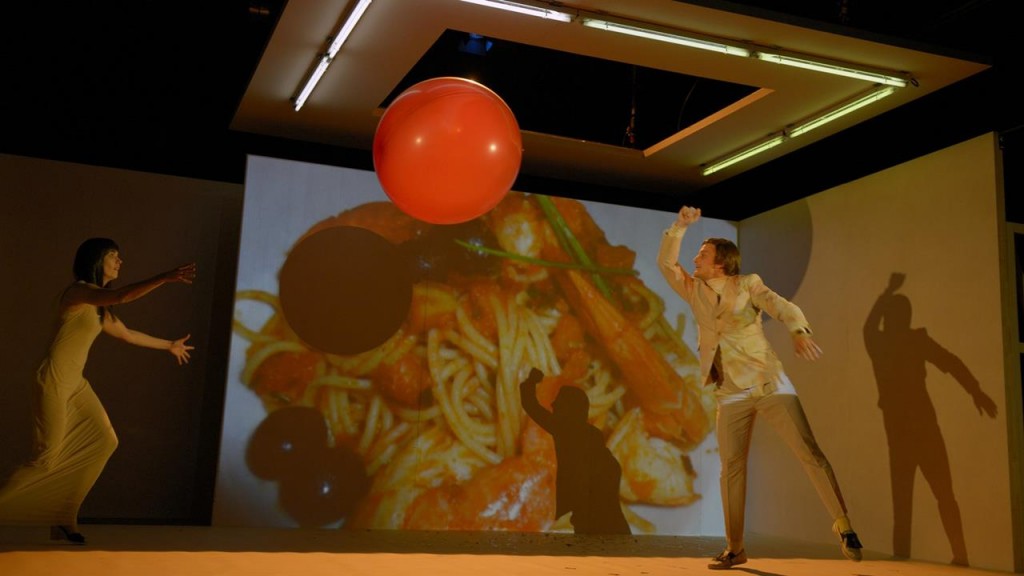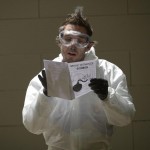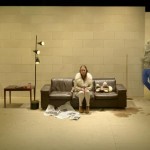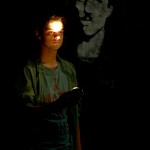From Serbia to Syria
With the open wound of the refugee crisis itching in the background, Vienna’s Volkstheater has clearly come forward as a place halfway between East and West in its first gesture as a member of the Union des Théâtres de l’Europe. There will be no borders here, says artistic director Anna Badora.

A spectre — the spectre of a refugee wave that is apparently out of control — was haunting Europe the evening the Volkstheater opened its flash-season exclusively devoted to the home country of one the biggest expat communities in Vienna (about 156,000 people, of which 70,000 still keep a Serbian passport, disembarked in Austria’s capital city looking for shelter from historic poverty and unemployment, the claustrophobic socialist regime led by Tito or, up until quite recently, the on-going wars that stormed the Balkans).
Yet another spectre — the spectre of terrorism as an epidemic of unprecedented proportions — haunted Europe one day later, in the painful aftermath of a terrorist attack that mortally wounded both the Western way of life, shooting at close range at some of its core representations (football, the entertainment industry, the good life).
Caught between the two crises, a theatre institution operating right in the centre of Europe, right at the crossroads where East and West have for centuries been coming together and drifting apart, kept doing what it has always done — and let the show go on. Still, “show” may not be the best term when it comes to the Serbischer November (Serbian November) festival — an event that took over several stages of the Volkstheater for four days. Yes, there was a party, and a time to eat, drink and dance the pain away, but then again there was also a time to confront — albeit in a comedy-cushioned mood — Yugoslavian socialism’s nepotistic record (Branišlav Nusić’s Pokojnic, directed by Igor Vuk Torbica), the tragic body count of the last Balkan Wars (Olivier Frljić’s Aleksandra Zec, directed by Olivier Frljić) and the more and more acute European cultural shock (which by now you’d expect to have become more and more obsolete) between the rich and labour-importing North and the impoverished and fatally emigrant South (Rainer Werner Fassbinder’s Katzelmacher, directed by Bojana Lazić).
These are traumatic issues, weighing on a country where democracy is still quite a new experience. Traumatic issues for Serbia, and, though on a different level, also for Vienna, considering that it was a Serbian nationalist, Gavrilo Princip (1894-1918), who unleashed the First World War — putting an unappealing end to the Austro-Hungarian Empire — through the assassination of Archduke Franz Ferdinand on 28 June 1914. But that was just the beginning of the 20th century; once it was over, Vienna had again become one of the biggest cities of the Serbian diaspora (or rather: one of the biggest Serbian cities). In the meantime, psychoanalysis came forward to help digest that and some other traumas.
So why pick the subject now that one hundred years have gone by since Austria and Serbia’s most violent and bloody confrontations took place in the battlefields of the First World War? Well, precisely because it’s about time to go past the trauma. And also because, as the Volstheater’s new artistic director Anna Badora pragmatically puts it, the Foreign Affairs Ministry wanted to promote 2015 as the Cultural Year Austria-Serbia: “Each and every season the Volkstheater must have an international focus. Since the Serbian community is extremely big in Vienna, even compared to the German one, I thought that this programme could perfectly combine all the interests at stake: the Ministry’s, the city’s and of course the theatre’s.”
Sold out performances and a “The Serbian community, just like other communities in Vienna, must be brought into the theatre — as a topic and as an audience. In Vienna, the majority of the people you will meet behind the shops’ counters don’t have German as their mother tongue. The Volkstheater, which is by definition ‘the people’s theatre’, must go out and look for them.”
In fact — and although the programme has clearly stated its intention was to outline and give visibility to the new generation of Serbian theatremakers, and the topics it has been able to freely deal with, after Tito, the war and Milošević —, other conflict zones, and not strictly Serbian ones, did stand out in this Serbischer November. First of all, the big North-South divide which the European sovereign debt crisis, and especially the bailout programmes imposed on Greece and Portugal, lately aggravated — an irresistible way of reading this almost 50-year-old play where Fassbinder staged the social and sexual tension induced by the arrival of the Gastarbeiter in post-war Germany (after all, emigrants from those two and other “peripheral” countries did write part of the German Economic Miracle story…). Secondly, the terminal disagreement among the members of the European Union over the refugee wave that the war in Syria and the struggle for survival in territories such as Sudan or Eritrea have exacerbated these past few months — a dangerously dividing topic even before made this new appearance in Paris that now risks dooming any foreseeable deal concerning the European borders.
With no dénouement in sight — and up until then eventually threatening to break Europe in two conflicting halves —, the refugee crisis was the topic the Volkstheater decided to address in a roundtable at the Rote Bar (a joint effort with the Union des Théâtres de l’Europe in the context of its Conflict Zones network program). It would be hard to ignore it anyway, in a city that just saw thousands of migrants being pushed into special trains by Austria’s neighbouring countries and flooding its main stations. The summer crowds have now vanished, but for hundreds of stranded refugees the Westbahnhof and the Hauptbahnhof still remain some kind of limbo halfway between asylum and repatriation — a limbo where at least they can find shelter, food, medical assistance and other support (translators, for instance, a basic necessity for many) provided by individual volunteers and organizations like Caritas and Train of Hope. It’s easy to spot them: they’re the boys reloading their SIM cards and aimlessly wandering around the Hauptbahnhof’s wide and desolate corridors, the little kids feeding the pigeons in the plaza just outside the station, and the fathers smoking at the entrance of the Westbahnhof’s executive lounge, now a temporary kindergarten for Syrian, Iraqi and Afghan babies and children. Not too far from here, in Spielfeld, on the border with Slovenia, Austria seems ready to build a 3.7 kilometre fence to “help manage” — i.e. “to slow and discourage” — the flow of thousands of migrants that demand its territory on a daily basis.
In a political landscape where the far right had already gained a very significant terrain (reaching 20.5% of the vote in the 2013 general election), the on-going refugee crisis further strengthened the Freiheitliche Partei (Freedom Party). In September, it doubled its score in the country’s third-largest state of Upper Austria; a month later, it reached a record result and nearly won the city election in Vienna, a long-standing social-democrat bastion — so is the audience of the Volkstheater, Anna Badora says “An old and old-fashioned audience”, she adds, and one she would love to “enlarge and diversify”, making way for “younger and more open” spectators to attend the theatre too. Still, the audience that filled the Rote Bar to take part in the roundtable dedicated to the dangerous liaisons between The refugee movement and right-wing populism — featuring political scientists Chantal Mouffe (University of Westminster) and Anton Pelinka (Central-European University, Budapest), anthropologist and Vienna Museum director Matti Bunzl, International Amnesty Austria’s spokesperson Daniela Pichler, chairman of the NGO Asyl in Not Michael Genner, and Kurdish-Syrian playwright Ibrahim Amir, a resident of Vienna since 2002 — seemed neither old nor old-fashioned. And the event that Anna Badora marketed as an effort to “raise the issues and find solutions” eventually became a strong statement for the emergence of an alternative (and therefore left-wing) narrative about the migration wave and what to do with it.

Is it rightfully part of a theatre’s mission — namely one of the main theatres of a city that has historically been a destination for migrants and refugees — to make such a political stand? “Indeed”, says Anna Badora. “Particularly in times like these, it’s important to work explicitly against the right-wing prejudices and propaganda, so that the audience will refuse to be manipulated by them.” The Volkstheater’s artistic director then quotes one of the speakers at the roundtable, Chantal Mouffe, to emphasize theatre’s own ability to generate the positive emotions that so far the left-wing parties haven’t been able to oppose to the “narrative of fear” (placing the immigrant as “the enemy”) the far-right is insisting upon.
Anyway, the Serbischer November’s roundtable is far from being the only approach the Volkstheater is taking on the refugee issue. The institution has also been working on other fronts, one of them being the Ausblick nach oben programme developed by the educational service, which is bringing together Austrian, Syrian and Afghan teenagers (some of which are not even German-speaking) and challenging them into forging a common language out of shared experiences of socioeconomic frailty. Homohalal, one of the current season’s productions, was yet another take on the topic: it is based on a play written by Ibrahim Amir together with some of the refugees who promoted the Sigmund Freud Park’s mediatized Refugee Protest Camp back in November 2012, claiming the right to remain and to work in Austria, along with improved living conditions.
We therefore ask Anna Badora if we should expect a Syrian November to follow this Serbian November in 2016. “I’d love it personally, but these programmes must be articulated with the Foreign Affairs Ministry, which has already stated its intention of focusing on Bosnia-Herzegovina in the coming year. It was once Austro-Hungarian territory, so there’s a relevant common history.” The Volkstheater director, herself an outsider in Austria (she was born and grew up in Poland), vividly underlines that the first season she created for the Viennese theatre is overwhelmingly “international”. Foreign-directed productions by directors coming from different countries of the European and Mediterranean space (Israel, Czech Republic, Germany, Hungary, Greece, Switzerland) clearly outnumber the shows being staged by Austrian directors. But the Volkstheater will eventually reach Syria sooner or later. Maybe later: “At this stage, it would be very difficult to organize such an event with war-stricken Syria; it would definitely be impossible to bring local productions to Vienna, which is actually what the programme stands for. But we can find alternative lines of work.”
Published on 26 November 2015 (Article originally written in Portuguese)









